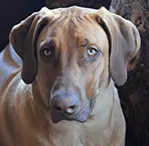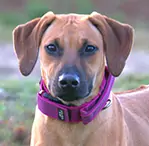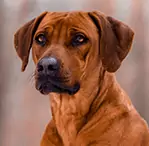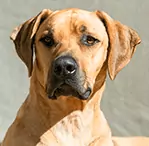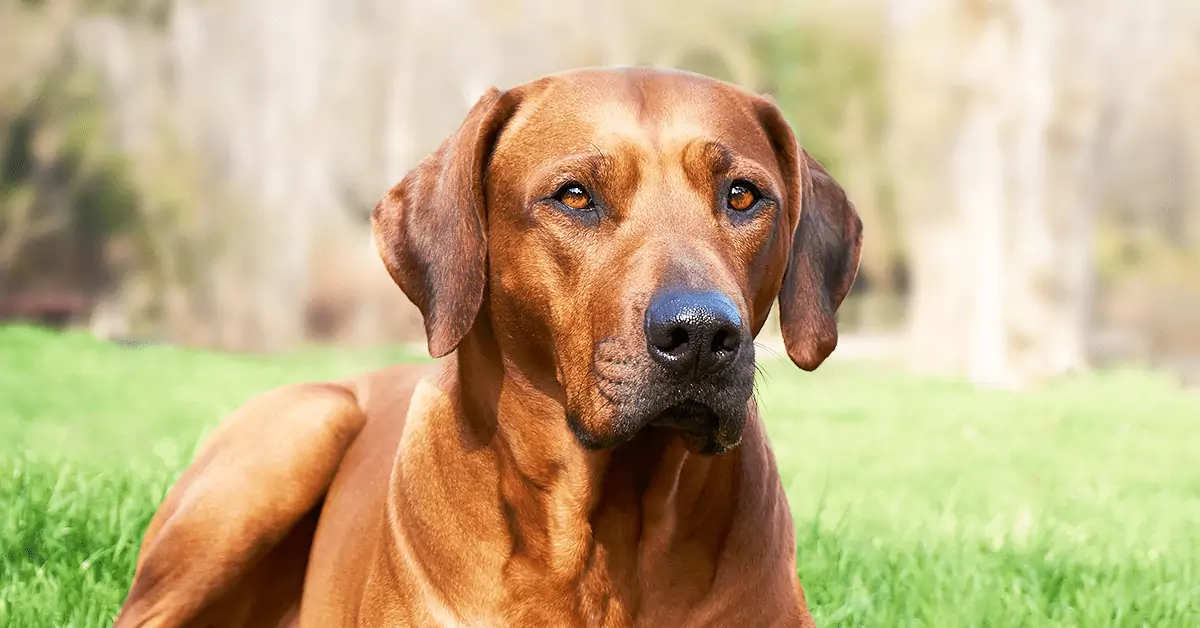
Meet the Rhodesian Ridgeback
High Doggy I.Q.
Pawfect Playmate
Top Workout Buddy
My Many Looks
My Breed Characteristics
Furbulous Fact
As I Grow Up
History of My Breed
Care Tips
Training Tips
Personality
Smart
Loving
Stubborn
Group
Hound Group
Origin
South Africa
Life Span
10 Years
Breed Popularity
#42 of 195
Height Range
24-27 Inches
Weight Range
70-85 Pounds
Coat Details
Type
Short
Texture
Features
Colors
Light Wheaten, Light Wheaten Black Nose, Light Wheaten Brown Nose, Red Wheaten Black Nose, Red Wheat
Hypoallergenic
Cost to Buy
$600-$2,000
Lifetime Care Cost
$22,225
My Many Looks
My Breed Characteristics
Furbulous Fact
As I Grow Up
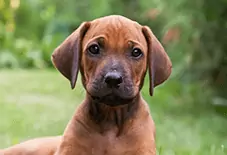
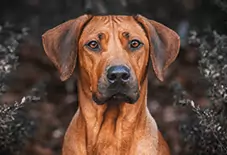
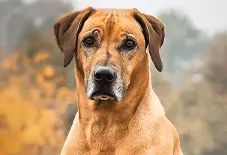
History of My Breed
Care Tips
from Dr. Jessica Greenberg, Associate VeterinarianWatch for signs of bloat.
Ridgebacks are at a greater risk of suffering from bloat (GDV). This happens when the stomach fills with air causing pressure to build, which stops blood from returning to the heart. If the stomach flips, it deprives the pancreas of oxygen which then produces harmful toxins. Talk to your vet about gastropexy, which can largely prevent this from happening.
Be aware of complications with the ridge.
Rhodesian Ridgebacks are prone to a rare, but serious, complication involving the ridge on their backs. All puppies should have a thorough first vet visit to determine whether or not that condition may occur in your Ridgie.
Adjust to your Ridgie’s hearing loss (if it occurs).
Rhodesian Ridgebacks sometimes suffer from hearing loss. Most dogs cope incredibly well to hearing loss and learn visual cue training signals. It’s important to be careful not to “sneak up” to them from behind because if they can’t see you coming, they may be more reactive when they notice you.
Training Tips
from Dr. Jessica Greenberg, Associate VeterinarianInterrupt your Ridgie when they're in “predatory mode.”
Ridgebacks are born hunters and some of the only animals that will stand up to lions. They have a lot of energy and a strong predatory instinct, so it’s easy for them to fall into cycles of wanting to hunt things. Watch for the “predatory look” when you’re out with your dog, which is when a dog pauses, focuses on an animal, and hunches over. Interrupt your dog when they're doing that and remove them from the situation. -RichardLovejoy,ProfessionalRemoteDogTrainer
Make sure your dog doesn’t guard resources.
Be cautious of allowing your Ridgeback to guard resources, like food and toys. If they take something and put it in their bed or one of their regular spots in the house but never use it, train them out of that. Make sure they know that the food and toys are yours, not theirs, and that you control these resources. Don’t allow them to become possessive over things and take toys away if they tend to growl over them. Cycle toys quickly through so they don’t have the chance to start feeling intense ownership. -RichardLovejoy,ProfessionalRemoteDogTrainer
Teach your Ridgeback good recall.
Rhodesian Ridgebacks usually have a strong prey drive and like to chase squirrels and other small animals. Make sure to start training your Ridgie early for good recall (coming back when called.) -LaurieWilliams,CertifiedProfessionalDogTrainer
My Many Looks
My Breed Characteristics
Furbulous Fact
As I Grow Up
History of My Breed
Care Tips
Training Tips
-
Personality
Smart
Loving
Stubborn
-
Group
Hound Group
-
Origin
South Africa
-
Life Span
10 Years
-
Breed Popularity
#42 of 195
-
Height Range
24-27 Inches
-
Weight Range
70-85 Pounds
-
动物皮毛
Type
Short
Texture
Features
Colors
Light Wheaten, Light Wheaten Black Nose, Light Wheaten Brown Nose, Red Wheaten Black Nose, Red Wheat
-
Hypoallergenic
-
Cost to Buy
$600-$2,000
-
Lifetime Care Cost
$22,225
